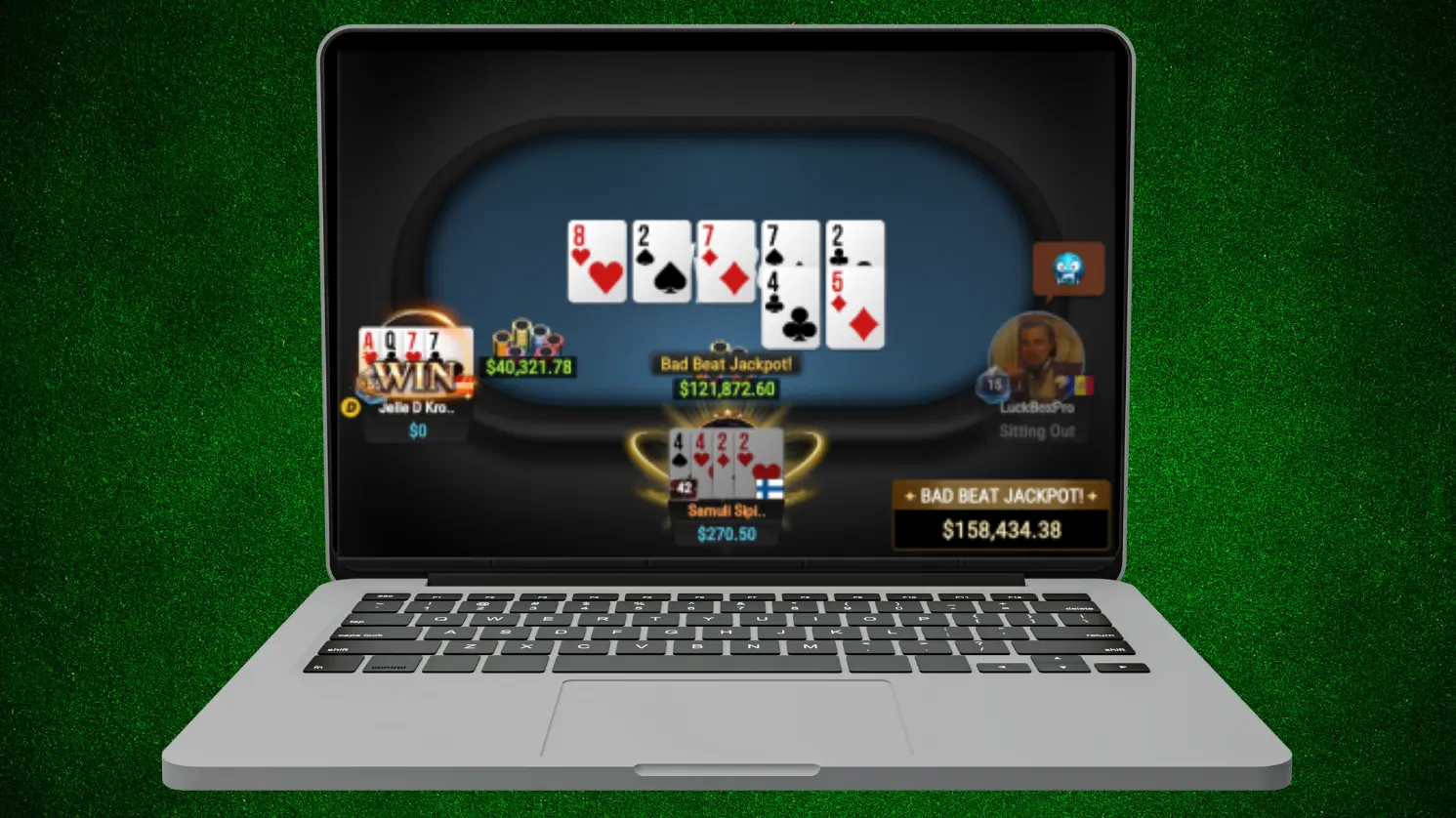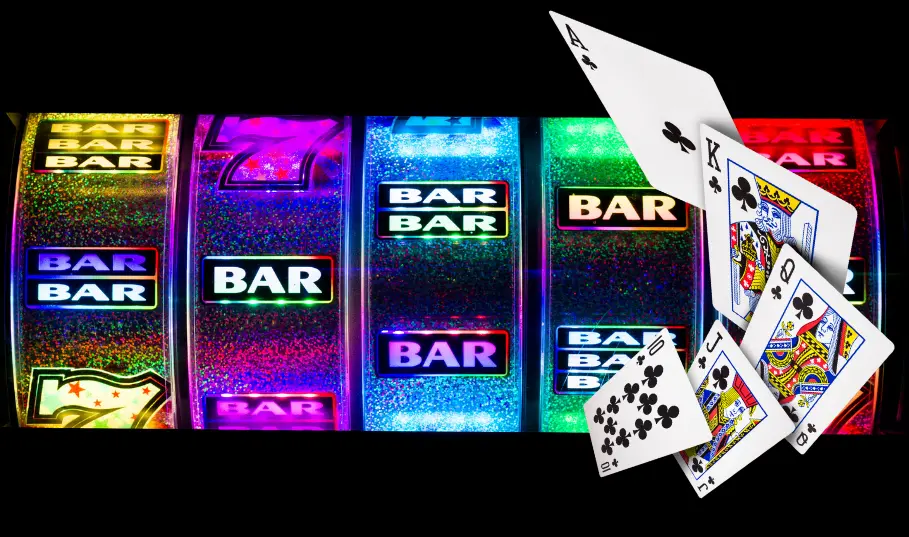A bad beat is a term used in poker to describe a situation where a player with a statistically strong hand loses to an opponent with a weaker hand. Bad beats usually occur in situations where a player bets or raises the clearly stronger hand, and their opponent makes a mathematically poor call or raise and still ends up winning due to improving their hand on the flop, turn, or river.
Bad beats are often considered to be one of the most frustrating experiences in poker, as they can result in a player losing their whole stack despite making the optimal decision. Long-lasting downswings where you can be outdrawn left and right for days on end can be a more brutal experience, though, yet you need to prepare yourself for both if you play a lot of poker.
Bad beats are not an uncommon occurrence in poker games. They can happen to anyone, regardless of their skill level – the more you play, the more likely you will get dealt one. While it can be emotionally taxing to experience a bad beat, it’s important to remember that they are a part of the game and that every player will experience them at some point. In the following sections, we’ll dive deeper into how to deal with poker bad beats as well as jackpots you can find by hitting a bad beat.
How does a bad beat differ from a cooler in poker?
A bad beat is a hand where one player has a significant advantage over the other and loses due to an unfortunate runout of cards. A cooler means a hand where both players have strong hands, but one hand is slightly stronger than the other. For example, the Aces vs Kings preflop in Texas Hold’em. In a cooler, the player with the weaker hand still loses, but it is not considered a bad beat because both players had strong hands.
To the untrained eye, both bad beats and coolers might appear to be instances of hard luck in poker. However, understanding the distinction between these two scenarios is crucial for professional and aspiring players alike. It’s not just about the cards but also about the implications these scenarios have on decision-making and emotional processing in the game.
In a bad beat scenario, the focal point is the disparity in strength between the two hands pre-flop or at any other point before the final card is dealt. Here’s a breakdown of the three factors making up a bad beat.
Probability of Winning
The player with the stronger hand has a considerably high statistical advantage. This means that if the same situation were repeated multiple times, they would emerge as the winner a majority of the time.
Expectation
Given the strength of their hand, the player expects to win a lot of chips or money on average. This makes the loss, when it occurs, unexpected – which is often quite frustrating.
Decision-making
Bad beats emphasize the concept that making the correct decision doesn’t always guarantee a win in poker. Players need to remember that their good decisions will lead to profit over the long run, even if they face occasional bad beats. This is hard to do as emotions greatly affect human behavior.
Coolers: Clash of the Titans
Coolers represent a face-off between two strong hands, where the outcome is often dictated by the inherent strength of the cards rather than the players’ decisions.
In a cooler situation, both hands are strong contenders for the pot. One just happens to be slightly better. The edge one hand has over the other is minimal compared to a bad beat scenario. Coolers are often seen as inevitable situations in poker. When two players have exceptionally strong hands, the chips will likely go in, and fate takes the reins from there.
Finally, while losing in a cooler scenario can be disappointing, it doesn’t carry the same emotional weight as a bad beat. Players recognize the strength of both hands and understand that such situations are simply a part of the game.
Bad Beat vs Cooler: Examples Hands
Consider two scenarios in Texas Hold’em:
- Player A has [A♠ A♥], and Player B has [8♣ 8♦]. They go to the flop in a single raised pot. The flop comes [8♠ K♦ Q♥], giving Player B a set. If Player A ends up winning in this scenario, it’s a bad beat for Player B, given the strength of set of Eights against the overpair of Aces on the flop.
- Player A has [A♠ A♥], and Player B has [K♠ K♥]. There’s a pre-flop raise war where Player A 3-bets, Player B 4-bets, Player A 5-bet jams and player B calls. The community cards don’t improve on either hand. Despite both players holding premium pairs, Player A’s Aces will prevail over Player B’s Kings. This situation is a cooler, as both players had super strong hands, to begin with.
By understanding the difference between a bad beat and a cooler, players can better frame their experiences at the poker table. This distinction can help in processing losses and making more informed decisions in future hands. You will experience both bad beats and coolers at the poker table, and you should not feel like you made a mistake after a cooler.
How to Win a Bad Beat Jackpot in Poker
For those looking for a silver lining, bad beats can lead to jackpots in certain poker games. Various online poker sites and live casinos have unique bad beat jackpot (BBJ) rules in place, particularly for No-Limit Hold’em (NLHE) and Pot-Limit Omaha (PLO) games.
For instance, a common rule on many platforms is that to qualify for the jackpot, both hole cards must be used by both the winning and losing hands. The hands usually need to be of a certain strength, often quad eights or better.
How to win the BBJ then? You simply need to lose or win with a qualifying hand. When a player hits a qualifying bad beat, the jackpot is shared, with the player having the worst bad beat getting the largest portion. The winner of the hand gets a bit less and other players at the table might also receive a slice. It’s essential to familiarize oneself with the specific rules of each platform to capitalize on these opportunities, as BBJ size is usually significantly larger than any deposit and reload bonuses offered by poker sites.
In the cover picture of this article, our pro team player Samuli Sipilä wins a $121,872.60 Bad Beat Jackpot at GGPoker. The hand took place in the summer 2023 as he played heads-up 4-card Omaha and ran into a set-over-set situation with a double pair as a starting hand. Luckily for Samuli, the turn improved his opponent’s hand into quads with sevens and the river brought Samuli quads with fours. A nice payday indeed by just being dealt a bad beat!
What are the Worst Bad Beats in Poker History?
Anyone keen on exploring unforgettable moments in poker should watch some of the most brutal televised bad beats. These heart-wrenching situations often transpire in big live poker tournaments, where stakes are high and emotions run even higher. One compelling compilation showcases some of these unforgettable moments:
Watching professionals poker players handle these challenging moments can provide lessons on maintaining composure and resilience, even when the cards don’t fall in your favor.
Historical Bad Beats: Stories from Poker Legends
Poker, a game rich in history and tradition, has seen its fair share of unforgettable moments. Many of these moments are celebrated victories, but some are heart-wrenching bad beats that have left even the most seasoned professionals in disbelief. Here is a look at some legendary tales from the annals of poker history.
Matt Affleck vs. Jonathan Duhamel (2010 World Series of Poker)
This hand is remembered as one of the most devastating bad beats in WSOP history. Affleck held pocket Aces and was a heavy favorite against Duhamel’s pocket Jacks. The flop and turn were safe for Affleck, but a Jack on the river gave Duhamel a set, knocking Affleck out of the tournament just before the final table. The sheer emotion displayed by Affleck after this hand showcases the profound impact of bad beats.
Connor Drinan vs. Cary Katz (2014 Big One for One Drop):
A bad beat can be incredibly costly in a high-stakes tournament with a $1 million buy-in. Drinan and Katz found themselves with pocket Aces, a dream scenario that usually leads to a split pot. However, after all the money got in pre-flop, the board ran out with four hearts, giving Katz a flush and sending Drinan home in disbelief.
Andrew Robl vs. Toby Lewis (European Poker Tour)
In a hand that demonstrates the sheer unpredictability of poker, Robl, holding pocket Kings, went all-in against Lewis’s pocket Aces. It looked like Robl was destined to exit, but the board ran out with four diamonds, giving Robl a flush and leaving Lewis in shock.
These stories serve as a testament to the unpredictable nature of poker. No matter how skilled a player is or how strong their hand might seem, the turn of a card can change everything. While these bad beats might have been tough to swallow at the moment, they’ve added depth, drama, and valuable lessons to the rich tapestry of poker’s history.
The Psychology Behind Bad Beats
The emotional aftermath of a bad beat is similar to the feelings we encounter after unexpected setbacks in life. Fundamentally, poker is a game of skill, strategy, and, unavoidably, chance. While players spend countless hours honing their skills and calculating probabilities, the element of unpredictability remains.
A player’s brain, especially one who has invested significant time and effort into understanding the game, expects to be rewarded for making the right decisions. When the expected reward is abruptly snatched away due to unforeseen circumstances, it triggers an emotional response. Neurologically speaking, our brain’s reward system, primarily driven by dopamine, experiences a sudden drop in this neurotransmitter, leading to feelings of disappointment, frustration, or even anger.
Furthermore, ego and identity play roles here. Many players tie their self-worth to their poker successes. A bad beat, especially in a crucial moment, can shake their self-perception, making them question their capabilities.
Coping Mechanisms for Players
Experiencing a bad beat can be overwhelming, but adopting specific coping mechanisms can help players manage their emotions and bounce back with resilience.
- Take a Short Break: After a particularly tough hand, stepping away from the table is beneficial, even if for just a few minutes. This allows the initial rush of emotions to subside and allows the player to return with a clear head.
- Practice Mindfulness: Techniques such as deep breathing exercises, meditation, or simply grounding oneself in the present moment can alleviate the immediate stress and help refocus on the game. Being mindful reminds players that poker is a series of hands, and one bad outcome doesn’t define the entire session.
- Post-Game Analysis: Reviewing your hand histories after a session is not only profitable – it can be even therapeutic! By revisiting the hand that led to the bad beat, players can reassure themselves that they made the optimal decision based on the information available. Such reviews reinforce the understanding that while strategy is crucial, short-term outcomes in poker can’t be controlled. This self-assurance helps in maintaining confidence for future games and playing your best despite any bad runouts and beats you might face playing poker.
- Seek Support: Discussing feelings with trusted friends, mentors, or fellow players can be comforting. Sharing experiences and getting perspectives can provide reassurance and valuable insights.
- Gamble Responsibly: Use responsible gambling practices like sticking to your budget and if necessary, activate blocking software like GamStop if your playing seems to get out of control. Once you’ve put these practices into place, don’t go looking for non GamStop poker sites even if the temptation is high – you’ll be better off focusing on other activities instead if you can’t control your gambling habits.
The Importance of Bankroll Management in Mitigating Bad Beat Impact
Bankroll management is a critical pillar in a successful poker career. By effectively managing one’s funds, the sting of a bad beat can be softened, ensuring the player remains financially sound and ready for future sessions. Implement the bankroll management strategies below to create a safety net and lessen the impact should you find yourself in a bad beat scenario.
Determine Buy-in Levels
As a general guideline, having at least 20 buy-ins for the cash game or tournament level you’re playing is advisable. This way, even if you suffer a few bad beats, it won’t devastate your bankroll.
Avoid Playing Above Your Means
Temptation might push players to join higher stakes, hoping for swift financial gains. However, playing above one’s bankroll level can lead to significant losses, especially when facing skilled opponents.
Track Your Finances
Regularly monitor wins and losses. Use poker tracking software or maintain a manual record. This not only helps in keeping tabs on your bankroll but also provides insights into your gameplay.
Reassess After Downswings
Consider moving down in stakes if you face a series of losses or bad beats. This gives a chance to rebuild the bankroll and confidence without excessive risk.
Diversify Your Game
Don’t put all your money into one type of game or tournament. Spreading the risk across different formats can safeguard against substantial losses in any one area.
Key Takeaways
So, what is a bad beat in poker? The essence of a bad beat is that the player with the better hand made the correct decision to bet or raise, but luck was not on their side. In poker, luck and skill intertwine to create moments of joy and frustration. While bad beats can be disheartening, they serve as a testament to the unpredictable nature of the game. By understanding the nature of bad beats, leveraging opportunities like bad beat jackpots, and learning from both your own experiences at the tables and from those who’ve faced the worst bad beats in poker, players can better equip themselves for the highs and lows of the game. Remember, resilience and adaptability (the mental game) are just as crucial in poker as strategy & tactics!









